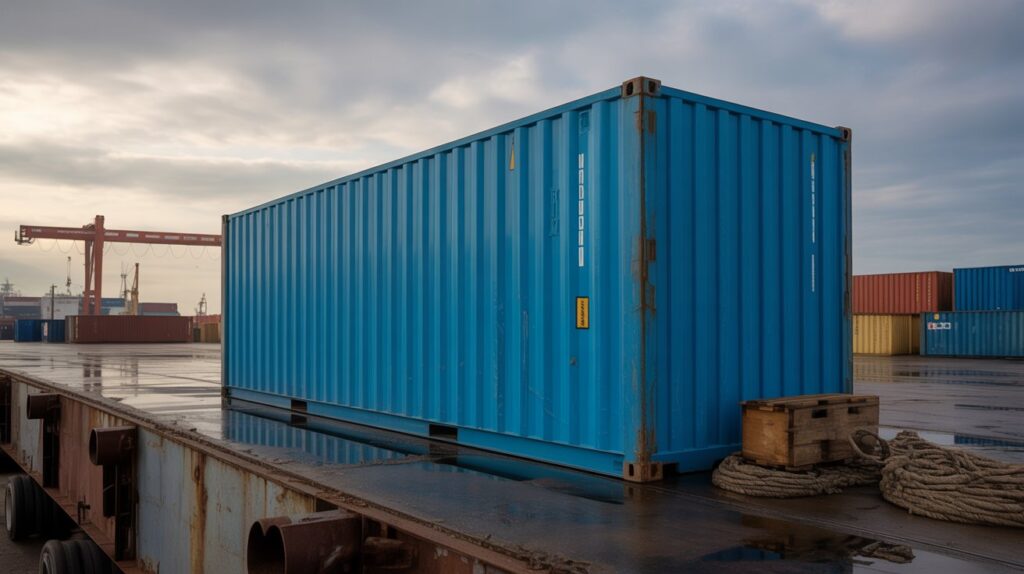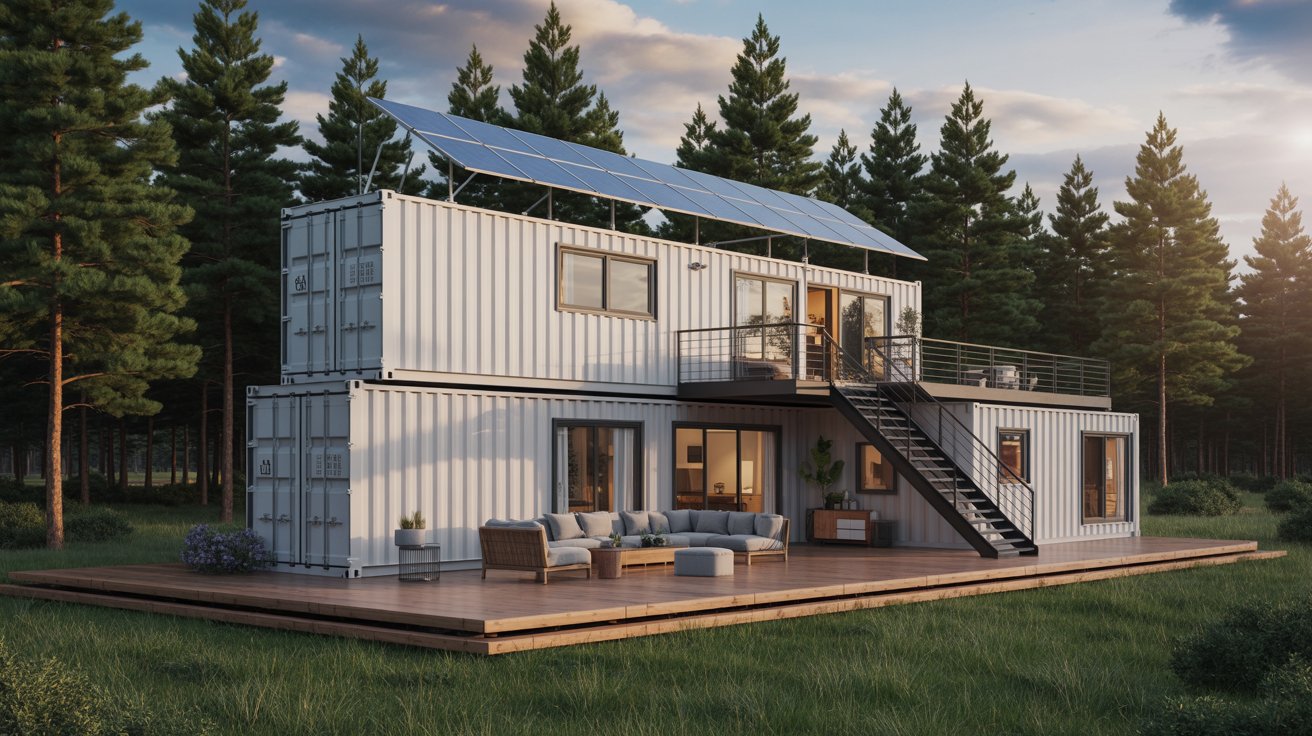Have you ever found yourself wondering how many shipping containers are required to construct a four-bedroom house? The idea of using shipping containers as building blocks for homes is not only innovative and sustainable but also quite practical. By repurposing surplus containers, you can create a unique living space with a distinct modern flair. This article will guide you through the process of estimating the number of shipping containers needed for a four-bedroom home, while offering insights into the benefits and considerations of this unconventional approach.

Understanding the Basics of Building with Shipping Containers
To accurately estimate the number of containers required, it’s essential to first understand the basics of building with shipping containers. Shipping containers offer a modular approach to construction, which makes them incredibly flexible in terms of design and layout.
Types of Shipping Containers
Standard shipping containers come in two primary sizes: 20 feet and 40 feet in length. While there are other variations, these are the most common and widely used in construction.
- 20-foot containers: Typically measure approximately 160 square feet of usable space.
- 40-foot containers: Offer around 320 square feet of space.
Knowing these dimensions is crucial because they form the basis for calculating how many containers you’ll need.
Advantages of Using Shipping Containers
Building with shipping containers provides several advantages:
- Durability: Made of steel, shipping containers are incredibly sturdy and designed to withstand harsh conditions at sea.
- Cost-Effectiveness: Often cheaper than traditional building materials, particularly when sourced second-hand.
- Sustainability: Repurposing containers is an eco-friendly way to recycle.
- Quick Construction: Their modular nature allows for quicker assembly compared to conventional construction methods.
Initial Planning for Your Four-Bedroom Home
Before you begin calculating the number of containers, it’s important to have a clear plan for your desired home layout. Understanding the space needs and configurations is the foundation of estimating accurately.
Define Your Space Needs
Consider what you want in your four-bedroom house. Besides bedrooms, other essential spaces could include:
- Living Room
- Kitchen and Dining Area
- Bathrooms
- Storage
- Additional Rooms: Perhaps an office or playroom
Include Room Sizes in Your Plan
Here is a rough guide on conventional room sizes you might consider:
| Room Type | Area (sq ft) |
|---|---|
| Master Bedroom | 200 – 300 |
| Additional Bedrooms | 120 – 150 each |
| Living Room | 200 – 400 |
| Kitchen/Dining | 150 – 300 |
| Bathroom | 40 – 70 each |
Functional Design Considerations
It’s not just about the number of rooms. Think about how these spaces will interact and what unique demands your family may have. Do you need open spaces, or individual rooms with privacy? This can affect how your containers are arranged and used.
Estimating the Number of Shipping Containers
Now that you have an overview of the room sizes and layouts, it’s time to translate this into the number of shipping containers you’ll require.
Calculation Based on Room Area
Using the room sizes mentioned above, you can calculate the total square footage of your desired four-bedroom house. Let’s break down a hypothetical configuration:
- Master Bedroom: 250 sq ft
- Three Bedrooms: 130 sq ft each
- Living Room: 350 sq ft
- Kitchen/Dining: 250 sq ft
- Two Bathrooms: 50 sq ft each
This totals to approximately 1,340 square feet.
Given that a 40-foot container provides around 320 square feet of space, you would divide 1,340 by 320, which gives you approximately 4.2 containers. Since you can’t use a fraction of a container, you would need at least 5 containers to cover the space requirements.
Designing with Modular Space
With five 40-foot containers, you have 1,600 square feet of space available. This allows not only for the planned rooms but also some flexibility for corridors or additional storage.
Creative Layouts and Stackability
Consider stacking options and how they can maximize space or create unique architectural features. Containers can be stacked up to 9 high when empty, but residential zoning laws and structural needs should dictate practicality.
Additional Considerations
When building with containers, it’s vital to go beyond just counting the number of boxes needed.
Insulation and Climate Control
Containers are essentially large metal boxes, so insulation is critical. Consider:
- Foam Insulation Boards: Highly effective in controlling temperature.
- Spray Foam: Offers excellent coverage against air leaks.
- Eco-Friendly Options: Wool, cotton, or recycled materials.
Plumbing and Electrical Needs
These systems need to be carefully planned within your container layout. Plan for sufficient space for wiring and plumbing channels, which may affect the number of containers required for utility spaces.
Regulatory Compliance
Always consult with local building codes and zoning laws. This can impact not only the number of containers but also their placement on your site.

Budgeting for Your Container Home
It’s crucial to create a well-thought-out budget to cover all aspects of your build, beyond just purchasing containers.
Initial Costs
- Container Purchase: Prices vary based on size and condition, ranging from $1,500 to over $4,500 per container.
Renovation and Structural Modifications
- Cut-outs for Windows/Doors: These modifications are labor-intensive and can add to costs.
- Structural Support: If your design involves large open spaces, additional beams or reinforcements might be required.
Finishing Costs
Amenities, fixtures, and furnishings can vary, so factor these into your budget. Remember, quality often impacts the longevity of your completed home.
Unexpected Expenses
Prepare for contingencies, such as weather delays or errors in delivery; it’s wise to have a buffer in your budget.
Conclusion
Building a four-bedroom house from shipping containers is a fascinating mix of innovation, sustainability, and architectural creativity. By understanding the space requirements and how these translate into the number of containers needed, you can embark on a seamless journey from idea to reality. Whether for bespoke living or as an architectural challenge, container homes allow for substantial customization and unique personalization. With careful planning and creativity, you can construct a comfortable, stylish home that adheres to modern living standards while championing eco-friendly practices.

